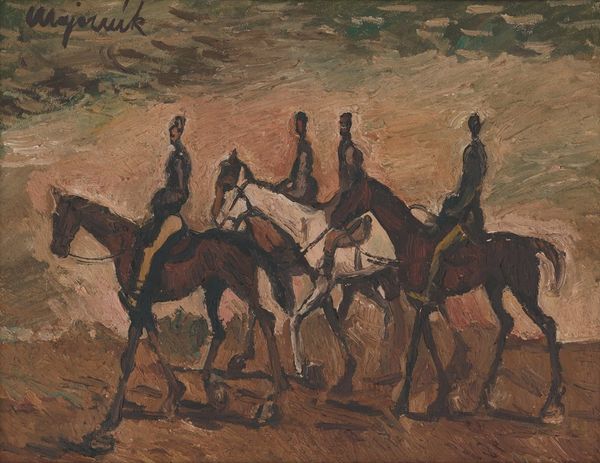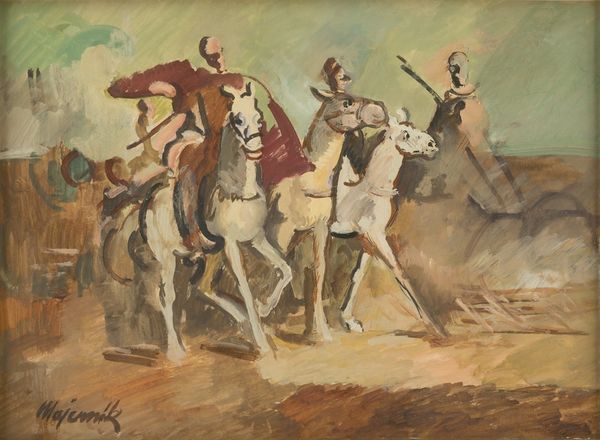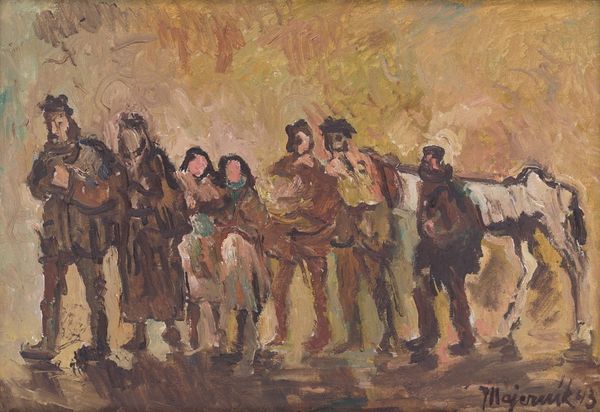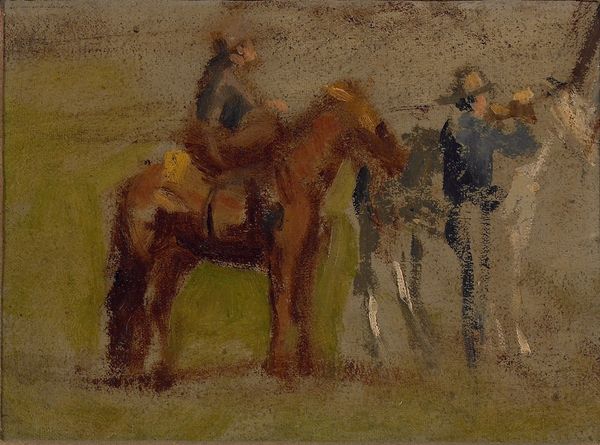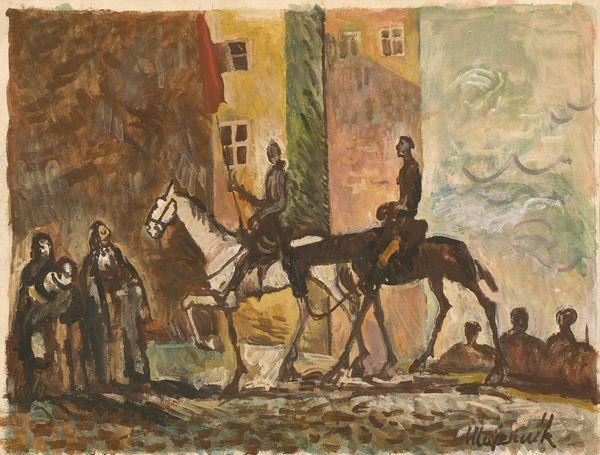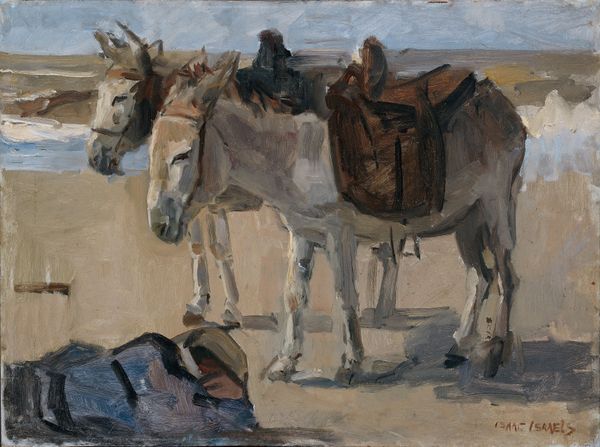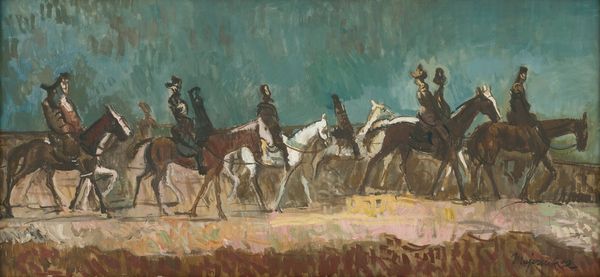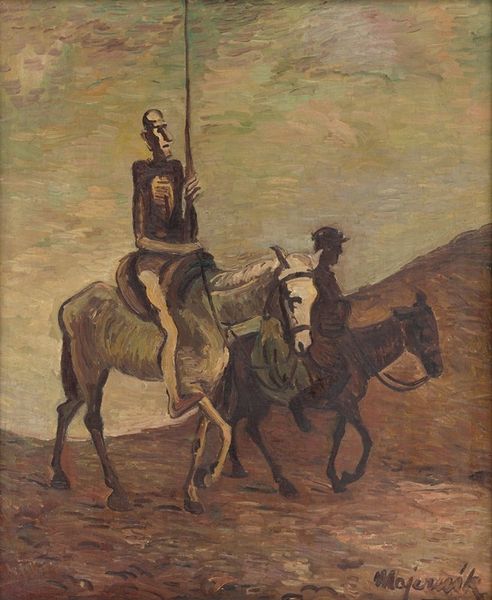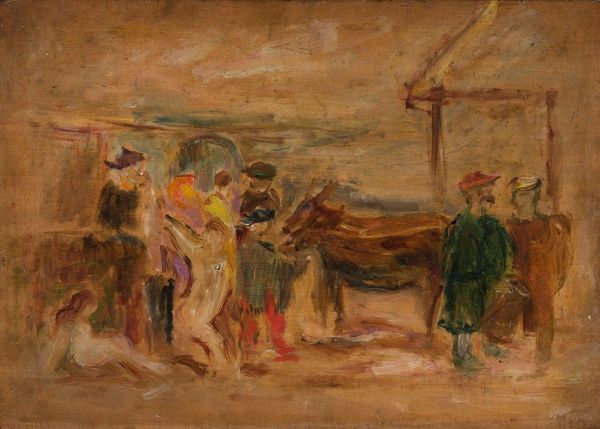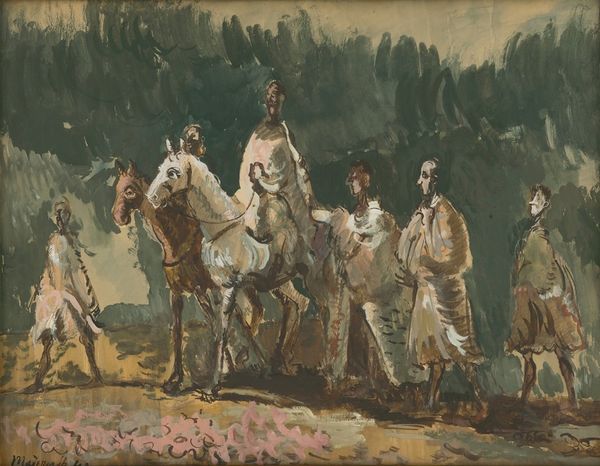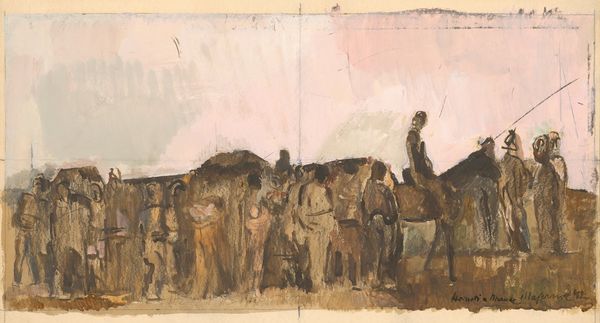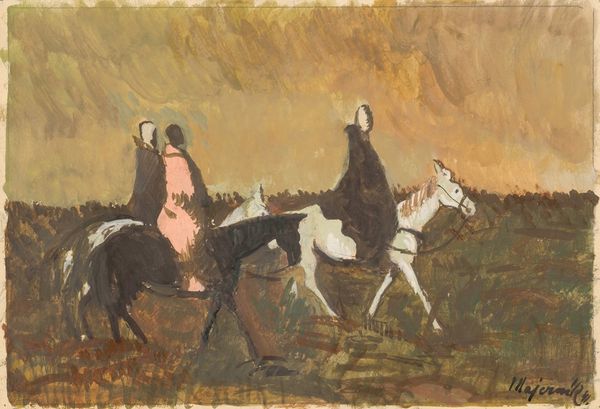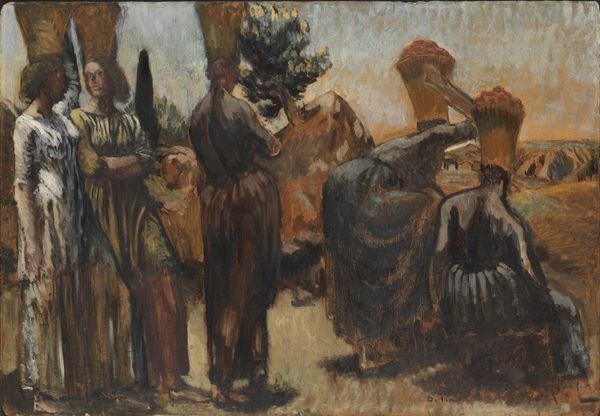
Dimensions: support: 1118 x 1854 mm frame: 1156 x 1886 x 59 mm
Copyright: © The estate of Josef Herman | CC-BY-NC-ND 4.0 DEED, Photo: Tate
Editor: This is Josef Herman’s painting, The Pit Pony. It seems to capture a moment of quiet weariness. The earthy tones create a somber mood. What emotional impact do you think the artist was aiming for? Curator: The pit pony, a symbol of exploited labor, stands alongside the miners. Notice how they mirror each other's slumped posture. What does this visual echo suggest about their shared fate? Editor: It’s like they’re both trapped in the same system. I hadn’t considered the parallel. Curator: Precisely. Herman uses the enduring image of the horse to reflect the miner's physical and emotional burdens, hinting at the broader narrative of industrial hardship and resilience. Do you agree? Editor: Yes, I think I do now. Thanks for clarifying the symbolism for me. Curator: It's fascinating how a single image can hold so much cultural memory.
Comments
Join the conversation
Join millions of artists and users on Artera today and experience the ultimate creative platform.
tate 8 months ago
⋮
At the centre of this frieze-like composition are a horse, identified by the title as a pit pony, and a man. Represented here as if almost one composite creature, they can be seen as symbolising Herman's vision of the union of working man and nature. The treatment of the faces and limbs of the miners in the foreground suggest that they, too, are part of the landscape. Over the course of the 1950s Herman had developed a more sculptural style, abandoning his earlier reliance on subtle modelling and chiaroscuro. He admired in such artists as Van Gogh, Rouault, Munch and Permeke, 'their instinctive non-aristocratic attitude, their popular spirit, giving even awkwardness its fair due'. Gallery label, September 2004
